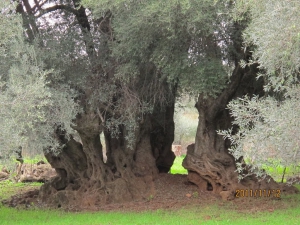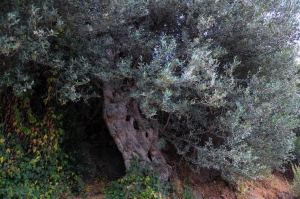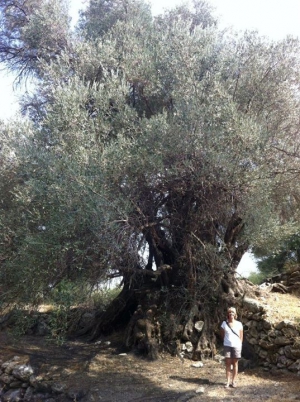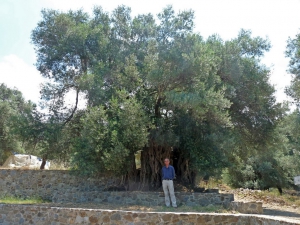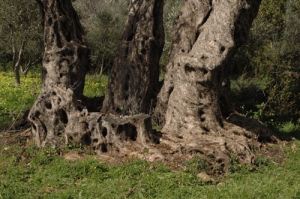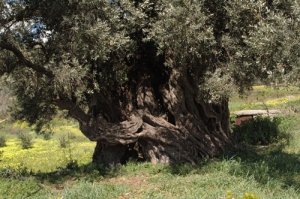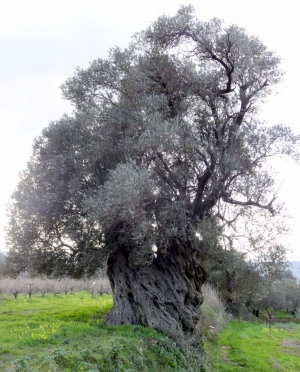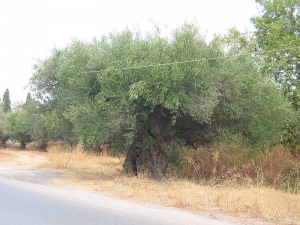The olive tree has been declared by the Association of Cretan Olive Municipalities as a natural monument due to huge size and its location near the postminoan settlement of Kolydra. Its site is named Lakkos and hosts numerous ancient trees, with this specific tree being 3000 years old.
The olive tree of Mathena has been declared as monumental by the Association of Cretan Olive Municipalities as a natural monument due to shape and relief trunk, forming a cave with its adjacent rock.
The olive tree has been declared by the Association of Cretan Olive Municipalities as a natural monument due to its size, shape and relief trunk. The name of the site is Gre Ele which means Old Olive and refers to this tree. Its variety is throumboelia and is grafted on a rootstock of a wild olive tree. It is estimated to have been planted in 650-500BC and is located very close to the archaeological site of Eleftherna.
The olive tree of Saint George is one of the many ancient olive trees in the areas Anisaraki and Vardaliana near Kandanos village. It has been declared as a memorial by the Association of Cretan Olive Municipalities due to its flattened shape and textured trunk.
The olive tree at position Kardamiana, near Genna, has been declared by the Association of Cretan Olive Municipalities as a natural monument due to shape and relief trunk. Its variety is called throumbolia and is grafted on a rootstock of a wild olive tree.
Paliamas Olive Tree has been declared monumental by the Association of Cretan Olive Municipalities due to its relief trunk and size. This olive tree dates back to the Sub-Minoan First Geometric period, produces big olives and it’s got a big cavity in its trunk, where three people can fit in. Its perimeter at its foot measures 20.40 meters and at a height of 80 cm from the ground it measures 10.50 meters.
The olive tree has been declared by the Association of Cretan Olive Municipalities as a natural monument due to its relief trunk. Its variety id called hontrelia and is grafted on a rootstock of a wild olive tree. The tree belongs to the Church and at a height of 0.8m it has 4.2m diameter and 10.6m perimeter, while its base has 4.5m diameter and 12.1m perimeter.
The olive tree is located on the right side of the road heading from Sitia to Piskokefalo and locals call it fourkolia, i.e. the olive tree where the Christians were drowned by hanging by the Turks. Unfortunately, the tree has been damaged severely due a car crash.











